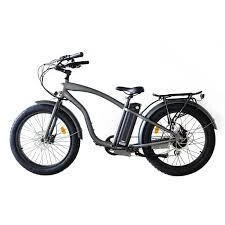9 月 . 24, 2024 21:23 Back to list
Tips for Properly Adjusting Your Mountain Bike Derailleur for Smooth Shifting
How to Adjust the Derailleur on a Mountain Bike
Adjusting the derailleur on your mountain bike is an essential skill for every cyclist. A well-tuned derailleur ensures smooth gear transitions, enhancing your riding experience and prolonging the lifespan of your bike components. Here’s a step-by-step guide on how to adjust the derailleur effectively.
Tools Required
Before you begin, gather the necessary tools a screwdriver (Phillips or flat depending on your derailleur), a 5mm Allen key, and possibly a chain cleaning tool if your chain needs maintenance.
Understanding the Derailleur
The derailleur is a mechanism that moves the chain between gears on your bike's cassette and chainrings. There are two main types the front derailleur, which shifts the chain between the chainrings, and the rear derailleur, which shifts the chain between the cogs on the cassette. This guide primarily focuses on adjusting the rear derailleur, as it often needs the most attention.
Step-by-Step Adjustment
1. Inspect the Bike Before adjusting, check for any visible damage or debris. Ensure the chain is clean and the derailleur is properly mounted without bends.
how to adjust derailleur mountain bike

2. Check Cable Tension Disconnect the cable at the derailleur. Pull the cable tight while ensuring it's routed correctly, then rehook it. This basic tension check can often resolve shifting issues.
3. Set Limit Screws The rear derailleur has two limit screws, typically marked ‘H’ (high) and ‘L’ (low). The high limit controls the movement of the derailleur toward the smallest cog, while the low limit does so for the largest cog.
- High Limit Adjustment Shift to the smallest rear cog (highest gear). Use a screwdriver to turn the ‘H’ screw until the derailleur aligns perfectly with the cog without touching it. - Low Limit Adjustment Shift to the largest rear cog (lowest gear). Turn the ‘L’ screw similarly to align the derailleur with this cog without contact.
4. Adjust B-Screw The B-screw adjusts the derailleur’s angle in relationship to the cassette. It’s essential for proper clearance and shift performance. Tighten or loosen the B-screw until there is just enough gap for smooth operation without the chain rubbing against the derailleur.
5. Test Shift Reconnect the cable and test your shifts. Go through all the gears, both up and down, to ensure everything transitions smoothly. If you encounter issues, re-check cable tension and limit screws.
6. Final Check After riding for a short distance, repeat the shifting test. Sometimes small adjustments are needed after the initial setup as components settle in.
Conclusion
Adjusting your mountain bike’s derailleur may seem daunting, but with patience and practice, it becomes straightforward. Regular maintenance will not only improve your riding experience but also extend the life of your bike. Remember, a well-functioning derailleur is crucial for tackling those demanding trails with ease!
-
The Main Application Scenarios of Mountain Bike
NewsOct.29,2024
-
Suggestions for Selecting and Maintaining Mountain Bike
NewsOct.29,2024
-
Characteristics of Kids Balance Bike
NewsOct.29,2024
-
Characteristics of Baby Stroller
NewsOct.29,2024
-
Characteristics and Advantages of Mountain Bike
NewsOct.29,2024
-
Baby Stroller Purchasing Suggestions
NewsOct.29,2024
-
Suggestions for Purchasing Kids Balance Bike
NewsOct.09,2024

